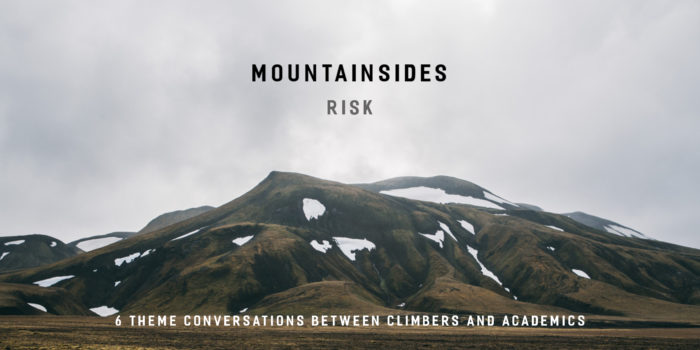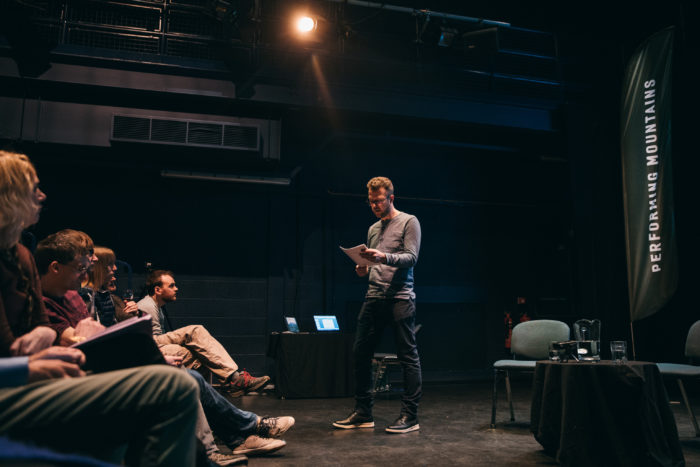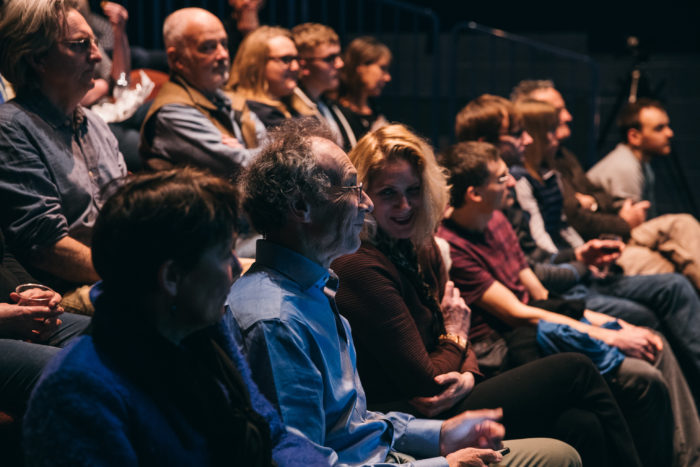RISK

RISK DOCUMENTATION
Date: Wednesday March 1, 2017.
Presenters: Stephen Venables and Victoria Robinson
Chair: Professor Jonathan Pitches
Panel Discussion (Audio Only)
Micro Essay: RISK
Author: Jonathan Pitches
If the aim of these themes is to help start conversations across disciplines then the theme of Risk offers as good a launchpad as any. Developed thinking about risk has been advanced in politics, economics, health, transport studies, environmental studies, and sociology as well as the more obvious areas associated with Lifestyle Sports or Extreme Sports. The well-known thinker on risk, Stephen Lyng, who appropriated the writer Hunter S Thompson’s term Edgework to capture the ambivalence of the term, identifies a typically inclusive range of sources in his early paper ‘Edgework: a social psychological analysis of voluntary risk-taking’ (1990) comprising: skydiving, aircraft test piloting, Mountain climbing, combat soldiering, prostitution, drug use, gambling, scuba-diving, Rock climbing, ice climbing, auto racing, motorcycle racing, endurance sports, downhill skiing and, criminal behaviour (Lyng 1990, pp.856–7).
Long though Lyng’s list might be, creative and/or cultural risk is conspicuously absent and although this is taken up by John Tulloch in Jens Zinn’s book Social Theories of Risk and Uncertainty (2008), Tulloch’s focus is on media studies and not on the kinds of risk improvising actors and dancers take on stage, applied theatre workers and their participants take in prisons, stand-up comics take in clubs or circus performers take under the big top. In short, what do the live arts add to the field of risk studies? And how do they rub shoulders with the more established areas of risky behaviour?
One answer is provided in one of the most recent issues of About Performance: High Stakes, Risk and Performance (2014). Here, Performance Studies academic Stuart Grant tries to fathom, ‘What if? Performance is Risk’, relating the riskiness of theatre and performance to its most fundamental characteristic, its liveness:
The risk of the performance begins in this passingness, as that which becomes itself only through its disappearance. When the actor looks into the face of the other actor on the stage and makes the offer of the line, the opportunity will never arise again. The stakes are high. (Grant 2014, p.133)
More recently still, the phenomenon of risk in performance has been mapped by Alice O Grady (our own head of School here at PCI), who focusses specifically on participatory and applied performance, developing a subcategory to Lyng’s Edgework in what she calls Edgeplay.
Edgeplay offers a space for potential development by virtue of being located in the fictional, the imaginary, and the invented. Risk taking within the frame of play has the ability to move things forward even though it is not concerned with the same sorts of thresholds as conventional edgework. (O’Grady 2017, forthcoming)
In applied performance contexts, in prisons for instance, the fictionality of the endeavour becomes a safe space to take risks without the dangers and potentially harmful consequences of of ‘real’ edgework. Perhaps this is the equivalent of the training wall in climbing, where moves and problems can be sorted out and attempted, first, in safe conditions before translating them to the rockface.
That Grant and O’Grady’s forays into the theorisation of live performance and risk are relatively rare is a surprise to me having read Stephen Lyng’s exposition of the characteristics of risk and edgework. He focuses specifically on the notion of voluntary risk taking (not on risk as ‘hazard, loss, damage or threat’ or on the technical calculations of risk - the other two types of risk according to Jens Zinn (Zinn 2008, p.4). From extensive qualitative and empirical research on the voluntary risks taken by sky divers and other extreme sport enthusiasts, Lyng identifies several common characteristics.
Risk takers have heightened competence in ‘control[ing] a situation that verges on complete chaos, a situation most people would regard as entirely uncontrollable’, he tells us. This involves ‘the ability to avoid being paralysed by fear and the capacity to focus one’s attention and actions on what is most crucial for survival’ (Lyng 1990, p. 859).
Is it fair to say that a live performer would understand that as much as any mountaineer or sky diver, even if the survival in question is palpably different? And how many performers have been on the other side? How many have experienced the ‘paralysing’ phenomenon of stage fright?
Lyng also suggests that ‘in the pure form of edgework, individuals experience themselves as instinctive acting entities, which leaves them with a purified and magnified sense of self […] In edgework, the ego is called forth in a dramatic way’.
I think it is definitely fair to say that most actors would recognise that characterisation, a point I put to my actor-in-training son, every time I meet him!
Other sensations identified in Lyng’s interviews with risk takers include: a feeling of extreme focus, obliviousness to extraneous environmental factors, a change in the experience of time, a feeling of identity with objects in the environment (of being at one with their machines), a sense of hyper reality or of things being much more real, and paradoxically a sense of the experience being ineffable (Lyng 1990, pp.861–2). You just can't put your finger on how it feels, unless you have done it yourself (and even then the experience is unique and individualised).
Lastly, Edgework involves– ‘planning purposive and flexible action, concentration. […] Skydivers spend more time preparing for a jump than they do making it.… They work out the exact sequence of formations in advance and rehearse the jump on the ground before entering the plane. The methodical and almost ritualistic character of these preparatory activities’, Lyng argues, ‘suggests that they are not merely ancillary to the essential experience of free-fall; rather, they are integral parts of the total experience.’ (Lyng, 1990, p.874).
Rehearsing before the live moment of performance is of course an integral aspect of a performer’s art, whether actor, dancer or musician. And even if the performer is improvising in the moment, the live event is a product of countless previous attempts. Might one suggest, then, that rehearsing dangerous acts to achieve control over chaos is an essential part of both edgework and live performance, if only to allow both kinds of actor to be spontaneous when ad hoc challenges are thrown their way.
But there is one important distinction to be made in the live domain of cultural and creative risk, beyond the obvious discussion of how high are the stakes. And that is to do with immersion and self-reflexivity. Lyng argues at the end of his paper that ‘the reflective self is simply not present at the height of the [risky] experience’ (Lyng 1990, p.880), that edgework in effect suppresses any capacity for reflection. I’d be very interested to hear our two speakers reflect on that suggestion: that the sense of self is denied at the apogee of risk enjoyment.
For a performer of live work, such a relinquishing of self-awareness cannot be so enjoyed, a fact that has been mulled over since Denis Diderot wrote his famous essay ‘The paradox of Acting’ in 1773. ‘At the very moment when he [sic] touches your heart, he is listening to his own voice’ Diderot argued, and in more emphatic terms still, ‘in complete absence of sensibility is the possibility of a sublime actor’. (Cole & Chinoy 1954, p.164)
The actor on the rockface of a role, then, has in fact a heighted sense of self, not a diminished one, a double consciousness which might prove fatal for her counterparts on real rockfaces.
Let me conclude this short introduction, then, with some key questions already shared with our speakers. You will have many more, I’m sure: What is it that drives people to take risks? What characterises the experience of risk beyond the physical? How are risk and identity caught up in one another? Can risk be understood at a social, emotional, cultural or cognitive level (O’Grady 2017)? What meeting points are there between risk-taking in mountain environments and risk-taking in cultural contexts? And has extremity begun to define both fields?
References
Cole, T. & Chinoy, H., 1954. Actors on Acting 2nd ed., New York: Crown.
Grant, S., 2014. What if? Performance is Risk. About Performance, 12(High Stakes: Risk and Performance), pp.127–144.
Lyng, S., 1990. A Social Psychological Analysis of Voluntary Risk-Taking. The American Journal of Sociology, 95(4), pp.851–886.
O, Grady, A;. ed. (2017) Risky Aesthetics, (forthcoming)
Zinn, J., 2008. Social Theories of Risk and Uncertainty: An Introduction. In J. Zinn, ed. Social Theories of Risk and Uncertainty: An Introduction. Oxford: Blackwell.


Photos by: Tom Joy
